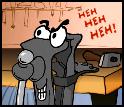|
|
| |
| |
|
|
|
|
|
|
|
|
| |
| |
| |
| |
| |
| |
| |
| |
| |
| |
|




| |
| |
|
Tell them you found it on anvilfire.com!
|
|
|
English Hundredweight System
Where the base unit is a hundredweight (CWT or 112 pounds) which is divided into quarter hundredweights, stones and pounds.
Units separated by dots in most cases.
Commonly used to mark anvil weights before the adoption of the metric system in Great Britain.
Rules:
- Any position can be zero, and IF zero is marked with a zero character (0).
- The middle position equals quarters (1/4) of a hundred weight. The value cannot be more than 3. If it looks like a five then it is a two or a three.
- The last (right hand) position is pounds and must be equal to 27 or less.
- 2240 pounds (20 CWT) and over is a "long tonne". This calculator does not have a place for tonnes.
The system seems unweildly but if you use a balance scale and the proper weights you just count the large weights, and total up the small ones and you are done.
The set of weights would never have more than a total of 27 in pounds, only 3 quarter hundred weights and as many hundred weights as needed.
A pounds weight set without duplicates or extras would be composed of:
14, 7, 3, 2, 1
Stone (14 pounds)
1/2 stone
3 pounder
2 pounder
1 pound
References and Links
Copyright
© 2006 - 2012 Jock Dempsey, www.anvilfire.com


|
|
|
|
English Hundredweight System
Where the base unit is a hundredweight (CWT or 112 pounds) which is divided into quarter hundredweights, stones and pounds. Units separated by dots in most cases. Commonly used to mark anvil weights before the adoption of the metric system in Great Britain. Rules:- Any position can be zero, and IF zero is marked with a zero character (0).
- The middle position equals quarters (1/4) of a hundred weight. The value cannot be more than 3. If it looks like a five then it is a two or a three.
- The last (right hand) position is pounds and must be equal to 27 or less.
- 2240 pounds (20 CWT) and over is a "long tonne". This calculator does not have a place for tonnes.
The system seems unweildly but if you use a balance scale and the proper weights you just count the large weights, and total up the small ones and you are done. The set of weights would never have more than a total of 27 in pounds, only 3 quarter hundred weights and as many hundred weights as needed. A pounds weight set without duplicates or extras would be composed of:14, 7, 3, 2, 1
Stone (14 pounds)
1/2 stone
3 pounder
2 pounder
1 pound
References and Links